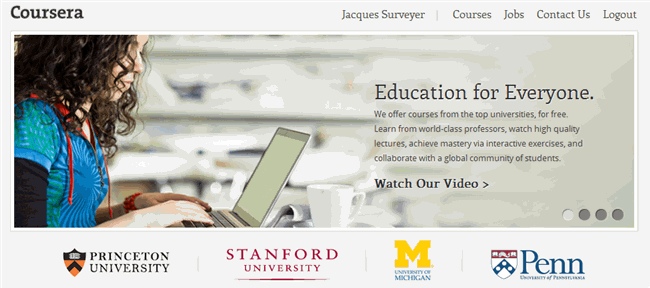Update: May16th, 2012 Tom Friedman of the NYTimes is climbing on board and calling it a Revolution. See here.
US Universities may have just crossed a tipping point – or should I say 4 tipping points.
First David Brooks at NYTimes has written a Martin Luther-like manifesto calling into question the efficacy of college/university teaching in the US. Here is the essence:
Colleges are supposed to produce learning. But, in their landmark study, “Academically Adrift,” Richard Arum and Josipa Roksa found that, on average, students experienced a pathetic seven percentile point gain in skills during their first two years in college and a marginal gain in the two years after that. The exact numbers are disputed, but the study suggests that nearly half the students showed no significant gain in critical thinking, complex reasoning and writing skills during their first two years in college.
This research followed the Wabash Study, which found that student motivation actually declines over the first year in college. Meanwhile, according to surveys of employers, only a quarter of college graduates have the writing and thinking skills necessary to do their jobs.
David goes onto hint at the second tipping point. That is the cost of a 4 year college/university education ranges from $60,000 to $160,000 leaving many students terribly in debt on graduation. This is the cause of the third tipping point because student debt amounts now to over $1trillion in the US leaving about 25 million college grads in debt right out of school. To make matter worse youth underemployment is the killer:
Carl E. Van Horn, a professor of public policy at Rutgers University recently looked at what happened to college graduates who finished school between 2006 and 2010. Of these, only half found full-time jobs.
Van Horn now worries for the approximately 1.5 million 2011 graduates vying for those same slots.“You have another class of graduates that are facing not only a difficult labor market but competition from the previous three, four and five years of young graduates also clamoring to find their way into the labor market,” said Van Horn. “The continued weak recovery will mean more graduates finding themselves in part-time jobs and contingency jobs and jobs that are far below their level of education.”
This is a festering problem that could really become politically unfriendly.
The fourth and last tipping point might seem to be good news – major universities are offering superb courses online for free. This blog has already highlighted some of the best. And now there is another even larger selection of courses for the summer months – see Coursera, itunes at Stanford U, Open Yale Courses and MIT OpenCourseWare. The Coursera studies are the same as what undergraduates take at Stanford University, University of Michigan, Princeton and Pennsylvannia University. The materials and lectures are the same. There are chats, quizzes, exams, and a wiki for students to exchange insights and ideas but not quiz and exam answers. Most important, most of the courses provide a certificate of participation and overall exam/quiz mark. Hello! The latter is the major tipping point.
If I can attend college for free, make friends, and geta graded certificate why not show a potential employer that my understanding of IT algorithms is not just a fluke but derived from my due diligence and work at Stanford’s Design of Algorithms course. Or knowledge of Chemical Engineering came from a free MIT Engineering Process course.
Given the popularity of these online courses for both students and teachers, expect them to continue an upswing. And hence the universities may be adjusting to a new, large, and international online “undergraduate” student body . What and how universities adapt to this new clientele is anybody’s guess but the wider college and university community will never be the same given the above four tipping points.

